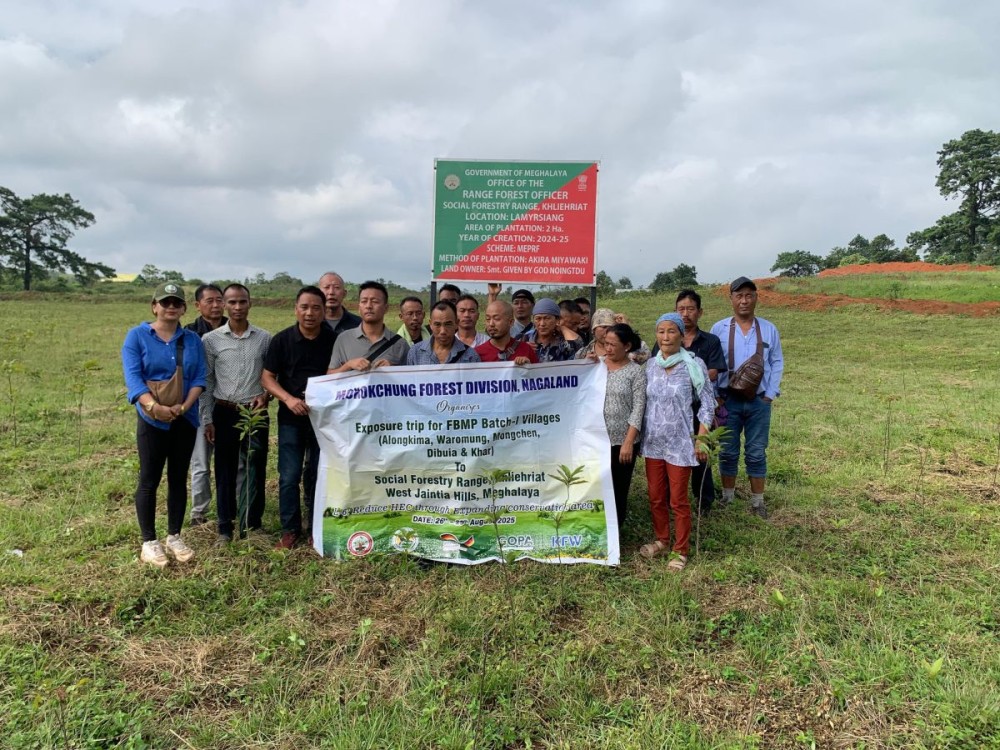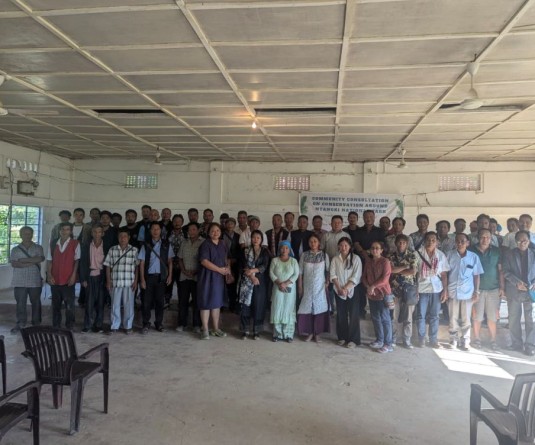
Mokokchung, August 31 (MExN): The Mokokchung Forest Division organised an exposure trip to East Jaintia Hills, Meghalaya, under the “Forest and Biodiversity Management in the Himalaya, Nagaland” Project (FBMP) from August 26 to 29. The project is co-financed by the Federal Republic of Germany through KfW (German Development Bank) and is being implemented under Mokokchung Forest Division in the Batch-1 villages of Alongkima, Khar, Mongchen, Dibuia and Waromung.
The objectives of the project include promotion of sustainable and effective management of forest and biodiversity in the state of Nagaland, support for improved connectivity and conservation of biodiversity, creation and enhancement of livelihood opportunities of dependent communities, and putting in place incentive mechanisms rewarding communities for effectively protecting and maintaining their Community Conserved Areas.
The exposure trip was carried out under the Community Conservation Area Management Plan of Mangkolemba Beat, which includes the villages of Khar, Mongchen, Dibuia, Alongkima and Waromung.
Each of the five villages was represented by four participants from CCAs and Self Help Groups, led by Moamongba, Assistant Conservator of Forests, along with five supporting staff members. The main objective of the trip was to study methods of reclamation and restoration of coal mining-affected areas through innovative approaches.
The team was welcomed by James R.N.D. Bamon, Range Forest Officer, Social Forestry Range, Khliehriat, and taken to visit plantation sites under the Meghalaya Environment Protection and Restoration Fund. The Fund was established after the ban on coal mining in Meghalaya to promote environmentally sound practices and support restoration of degraded ecosystems.
During the visit, B. Lyngdoh, Divisional Forest Officer, Social Forestry Division, Jaintia Hills (Jowai), gave an introductory address highlighting the ongoing and planned initiatives under the Fund. Moamongba, Assistant Conservator of Forests, also explained the purpose of the visit and shared the project’s theme with the participants.
The delegation visited sites where plantations were established using different methods, including the Akira Miyawaki plantation technique. The Range Forest Officer gave a practical demonstration of the plantation procedure using the Miyawaki method. He explained that the scope of the Miyawaki model of dense plantation includes selecting dominant species from the potential natural vegetation of the area and planting them in a mixed and dense manner along with multiple companion species. This approach, he said, helps to develop a multi-strata forest ecosystem, ensuring faster regeneration and long-term ecological resilience.
The Range Forest Officer further highlighted that the Miyawaki method has been identified as an effective approach for restoring coal mining-affected and degraded lands, with the objectives of “improving the productive capacity of degraded lands, enhancing the conservation value of landscapes, promoting ecological restoration and regeneration, creating Environment Protection Forests (EPF), and ensuring people’s participation in planning and restoration efforts in surrounding villages.”
Members of the Community Conserved Areas and representatives of Self Help Groups expressed that the exposure visit was highly beneficial as they learned about practical methods of reclaiming coal mining-affected areas. They also committed to sharing their experiences with their respective communities, contributing towards collective conservation and restoration efforts.




